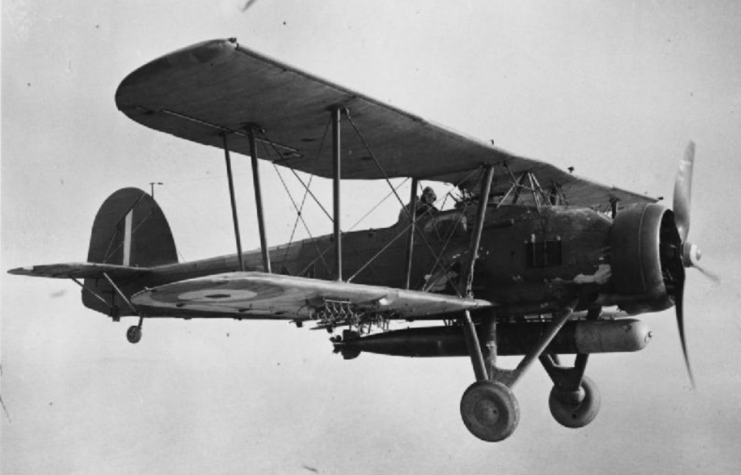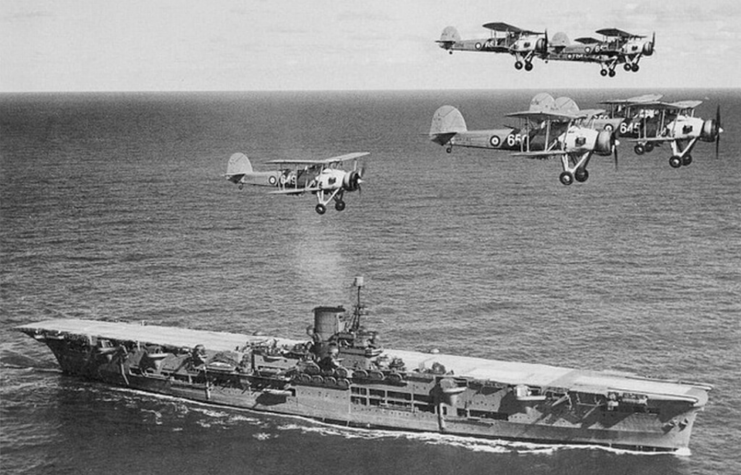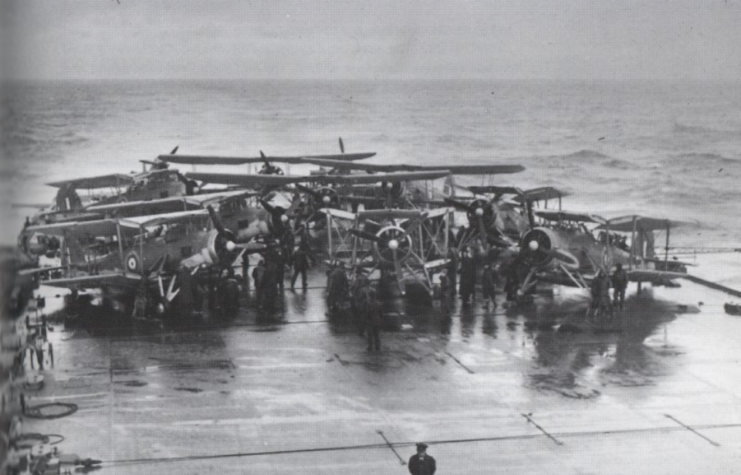Fairey Swordfish: The Outdated Biplane That Helped Sink the German Battleship Bismarck
The Fairey Swordfish was a biplane torpedo bomber, nicknamed “Stringbag,” that primarily served with the Fleet Air Arm (FAA) of the British Royal Navy during the Second World War. While outdated by 1939, the Swordfish went on to have an impressive wartime record, including sinking a larger tonnage of Axis shipping than any other Allied aircraft and famously playing a role in the sinking of the German battleship Bismarck.
Development of the Fairey Swordfish

In 1933, Fairey began developing a new aircraft for aerial reconnaissance and use as a torpedo bomber. The company designated it the Torpedo-Spotter-Reconnaissance I (T.S.R. I), and decided the overall design would be that of a biplane.
The development of the T.S.R. I was initially internally financed. That being said, Fairey’s design paralleled the requirements the British Air Ministry had for such an aircraft. For instance, in 1934, the government created advanced specifications for torpedo bombers, which were applied to the T.S.R. I’s design.
On March 21, 1933, the T.S.R. I prototype flew for the first time. Over the next two years, the aircraft and following prototypes were evaluated with flight tests, water-handling trials with a twin-float undercarriage, and catapult and recovery tests aboard the HMS Repulse (1916).
With these tests complete, the first 68 orders were made in early 1936. Blackburn Aircraft also manufactured the aircraft, to keep up production. The biplane was manufactured until August 1944,; during the run, Fairey built 692 of the aircraft, while Blackburn produced another 1,699.
Fairey Swordfish specs

The Fairey Swordfish was a medium-sized biplane constructed from a metal airframe covered with fabric. The design included folding wings, which saved space when storing them aboard ships, and the biplane was operated by a three-man crew: a pilot, an observer and a radio operator/rear gunner. That being said, it was frequently operated by two crewmen, with the observer being replaced with an auxiliary fuel tank.
A single Bristol Pegasus IIIM.3 nine-cylinder air-cooled radial piston engine powered the Swordfish. It used a three-bladed metal fixed-pitch propeller, producing 690 horsepower. The Swordfish had a maximum speed of 143 MPH at 5,000 feet while carrying a torpedo, with a range of 522 miles and an endurance of five hours and 30 minutes.
The aircraft carried various weapons, including one fixed, forward-firing .303-inch Vickers machine gun on the upper-right fuselage and one rear-firing Lewis or Vickers K machine gun in the rear cockpit. The Swordfish could also carry a single 1,670-pound torpedo or a 1,500-pound mine under the fuselage, along with up to 1,500 pounds of ordnance under the fuselage and wings or up to eight 60-pound RP-3 rocket projectiles.
Norwegian Campaign

The Fairey Swordfish entered service with the Fleet Air Arm in July 1936. Initially part of the Royal Air Force (RAF), the FAA was later transferred to the Royal Navy. When the Second World War began, 26 squadrons began operating the Swordfish.
On April 11, 1940, the Swordfish got its first taste of combat during the Norwegian Campaign. Taking off from the HMS Furious (47), they were tasked with attacking German ships anchored at Trondheim. Upon arrival, they found two enemy destroyers, one of which became the victim of a British torpedo torpedo. This wasn’t just the first attack by a Swordfish, it was also the first by torpedo-carrying aircraft during the war.
On April 13, Swordfish from the HMS Warspite (03) took part in the Second Battle of Narvik. During this, the British suffered no losses, while eight German destroyers were either sunk or scuttled. The Swordfish also became the first FAA aircraft to destroy a U-boat when one dive-bombed and sank U-64.
Fairey Swordfish in the Mediterranean

On June 14, 1940, after Italy entered the war, nine Fairey Swordfish took part in the first Allied bombing raid against the nation. They participated in a second raid against oil tanks at Augusta, Sicily approximately two weeks later.
On July 3, Swordfish took part in the Attack on Mers-el-Kébir, which saw the Royal Navy attack the French fleet at Oran, French Algeria to prevent the vessels falling into enemy hands. Taking off from the HMS Ark Royal (91), 12 Swordfish attacked, greatly damaging the battleship Dunkerque. This presented the first time the British had won a battle without the use of gunfire, and it displayed the vulnerability of ships in port and how effective the Swordfish could be against them.
Swordfish went on to support the British Army by destroying enemy ships off the coast of Libya. On August 22, with only three torpedoes, three biplanes took out a destroyer, support ship and two U-boats in the Gulf of Bomba. The aircraft also saw great success in the Battle of Taranto.
The leading Italian fleet was based at Taranto, in the south of Italy. After intelligence was gathered, the British launched their attack. A wave of Swordfish dropped flares to illuminate the harbor, followed by a second group armed with torpedoes and bombs. The biplanes evaded anti-aircraft fire and caused serious damage to three battleships, along with scoring hits on two cruisers and two destroyers.
Taking on the German battleship Bismarck

Fairey Swordfish also attacked U-boats during the Battle of the Atlantic. That being said, the aircraft’s most famous engagement was the attack on the German battleship Bismarck. On May 24, 1941, during the Battle of the Denmark Strait, Bismarck sank the British battlecruiser HMS Hood (51). The British pursued the German battleship, hoping to exact retribution for their loss.
Swordfish were integral in finding Bismarck; beginning on May 24, aircraft from the HMS Victorious (R38) flew sorties to find the battleship. On the first day, one launched a torpedo, which inflicted little damage. The British caught up to Bismarck on May 26, due to the Germans’ evasive measures ultimately slowing them down.
On that day, the HMS Ark Royal came into range, launching two Swordfish strikes. The first couldn’t find the vessel; however, the second hit the battleship with two torpedoes. One of these scored a lucky blow to Bismarck’s rudder, jamming it at 12 degrees to port. She could no longer maneuver and was stuck sailing in a circle.
More from us: Forget CGI! A B-17 Was Actually Crashed During the Filming of ‘Twelve O’Clock High’
This allowed Royal Navy ships to come into range and fire upon Bismarck, which sank 13 hours later. This engagement made the Fairey Swordfish famous. The biplane, outdated when the war began, helped sink one of Britain’s greatest adversaries: Bismarck.
The post Fairey Swordfish: The Outdated Biplane That Helped Sink the German Battleship Bismarck appeared first on warhistoryonline.
Fairey Swordfish: The Outdated Biplane That Helped Sink the German Battleship Bismarck
Philippines Truth
Post a Comment
0 Comments